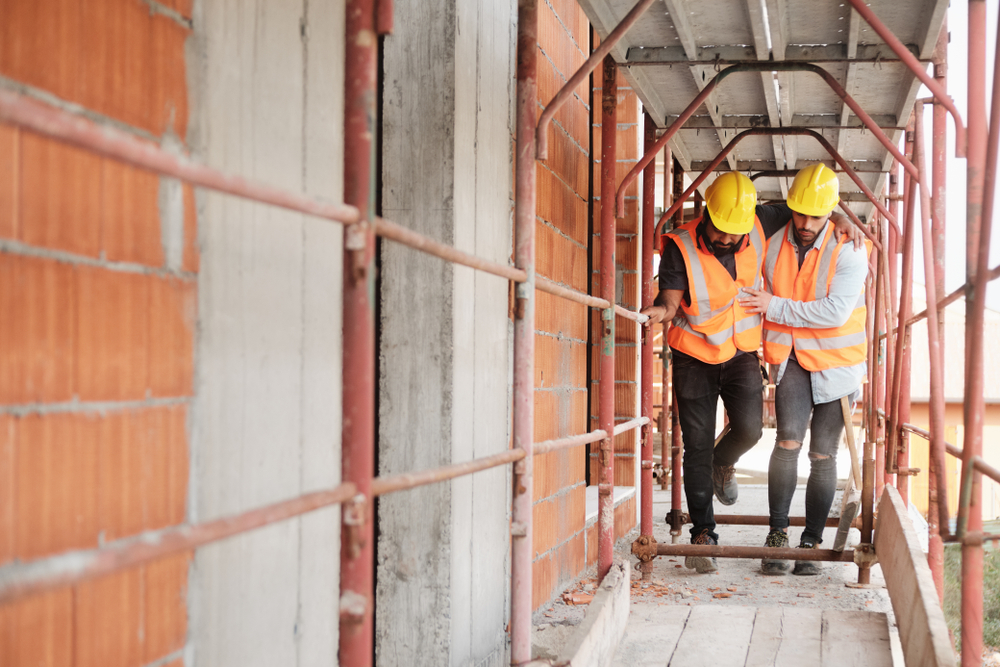What procedures do you have in place to prevent workplace injuries? Depending on your environment and the types of materials used, your employees could be at risk for accidents and injuries while working. Workplace accidents can vary from fire accidents caused by gas leaks to falling off of heightened platforms. Learn how to prepare your team for a variety of emergencies with tips from our safety experts.
With simple cautionary steps in place, you can easily evade workplace accidents and injuries. Whether it’s training employees to handle hazardous situations or installing detection systems for safety preparedness, keeping your facility safe starts with having a plan and putting it in motion. Here are some of the critical things to have in mind when preventing workplace injuries.
Common Causes of Workplace Injury
The first step of any emergency preparedness plan is risk assessment. Learn what situations or conditions your workplace has experienced in the past prepare accordingly.
Construction sites often have some of the most reported cases of workplace injuries. From walking on a scaffold to managing heavy machinery, there are numerous ways accidents can happen. With that being said, indoor environments aren’t exempt. Those who work in an office or lab environment could harm themselves from lifting heavy objects, handling toxic materials, or even, sitting with bad posture.
Any activity that requires repeated or fast movement of a body part, such as your hand or arm is particularly at risk for injury. Whether it’s body vibrations caused by powerful machinery tools or strained muscles from heavy equipment, workplace injuries come in all shapes and forms.
Your environment is another factor worth considering when determining your workplace’s risks. Depending on where you work, whether it’s indoors, outdoors, near water, or in a confined area can present a number of problems. Cold environments, for example, are prime spaces for workers to experience hypothermia or frostbite.
Preventive Measures
While it’s not possible to hedge against all potential workplace incidents, the next step of an emergency plan is setting preventative measures. By fully understanding what hazardous situations are present, you can put particular safety guidelines and rules in place to prevent harm. Whether it’s restricting access from areas where construction is occurring or installing an onsite gas detection system, these preventative measures will keep you one step ahead of any workplace injury.
How to Respond to an Emergency
Unfortunately, accidents do happen. While you can prepare and train your employees to follow certain safety guidelines, there is always a chance that someone does get injured. Make sure your emergency response plan has been clearly laid out so that employees know who to call and how to respond in the case of a problem. Whether it’s knowing how to perform CPR, simple first aid procedures, or using a fire extinguisher, preventing further injury starts with your response.
Handling Gas Leaks
As a leader in gas detection technology, we’re committed to making sure you have the resources to combat dangerous gas leaks. Since gas leaks can quickly lead to fire, explosion, or become extremely hard to control, your team should be aware of how to adequately respond. If your gas detector alerts you to a dangerous gas leak, be sure to keep the following in mind to prevent a further accident:
- Don’t hesitate to call 911 for assistance
- Turn off the main gas valve to prevent further leaks
- If you have doors, windows, or vents, make sure they are open to let the gas evaporate
- Avoid using electric devices such as computers and phones
- Don’t ignite any flame, candles, cigars, etc
- Evacuate from the building until the leak is under control
Keep Your Workplace Safe
Having the right safety procedures in place are crucial for reducing workplace injuries. Make sure your team is one step ahead of any danger by setting safety guidelines that apply to your specific environment. Whether it’s the equipment you use or the space you’re working in, emergency procedures provide peace of mind when dealing with potentially dangerous situations.
Contact our team of experts for more tips and ideas on workplace safety.

